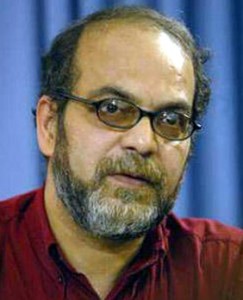February 21-2014

. . . waiting for Godot
It has now been six months since President Rohani was inaugurated, but there has been only minuscule change in the country’s social control policies.
Mashallah Shamsolvaezin, one of the country’s major newspaper editors, has, in fact, complained that there has been absolutely no loosening of newspaper censorship whatsoever in those months.
He told the Iranian Labor News Agency, “In the newspaper field, there has been no change since the arrival of the new government.”
Rohani has no say in many areas of concern. For example, the dress code is enforced by the police, who are under the direct supervision of the Supreme Leader, not the president.
The arrest and release of political prisoners is handled by security forces under the Judiciary. Since Rohani’s inauguration, 20 political prisoners have been freed, but no more.
The jails where torture is endemic are under the control of the Judiciary or security agencies, and a president cannot give any orders there.
But censorship is overseen by the Culture Ministry, whose chief is named by the president.
So far, Culture Minister Ali Jannati has made all the right noises, complaining about the level of censorship and criticizing it for mindlessness. Several weeks ago, he very dramatically said the Qoran wouldn’t be able to pass Iran’s censors if it was a new book presented for their review.
But in six months, Jannati’s Culture Ministry is only known to have licensed a solitary book that was banned under President Ahmadi-nejad.
Jannati has said little about newspaper censorship and there is no visible change in its application. The press is silent on many topics. The media hasn’t even pursued the bungles of the last administration, even though the new ministers are often making comments and releasing statistics to embarrass their predecessors. The media report what the new ministers say, but do not follow up on the issues.
Shamsolvaezin, the editor-in-chief of the Neshat daily that was banned under Ahmadi-nejad, said that under the old Administration the Culture Ministry would welcome journalists with open arms. “They would talk to the journalists, but it would all end up with no result,” Shams-olvaezin said.
Under Rohani, he said, the government deals with journalists in exactly the same way.
He said he is trying to get his daily back in business and that Culture Ministry officials tell him they wish to see Neshat and Hammihan, another banned daily, back on the newsstands.
“There appears to be no obstacle to re-launching them,” he said. “All the officials are highly encouraging. But nothing positive happens and we are doomed to remaining hopeful.”
Radio Zamaneh in the Netherlands said it heard that the Judiciary had intervened to stop Neshat and Hammihan from being published again.
It is possible that the unchanged system of censorship is also being maintained by intervention from the Judiciary. But if that is so, it suggests that the Rohani Administration is toothless when it comes to social control policies. And since the Administration has not complained about outside intervention, it suggests it is also unwilling to do battle for new policies.
